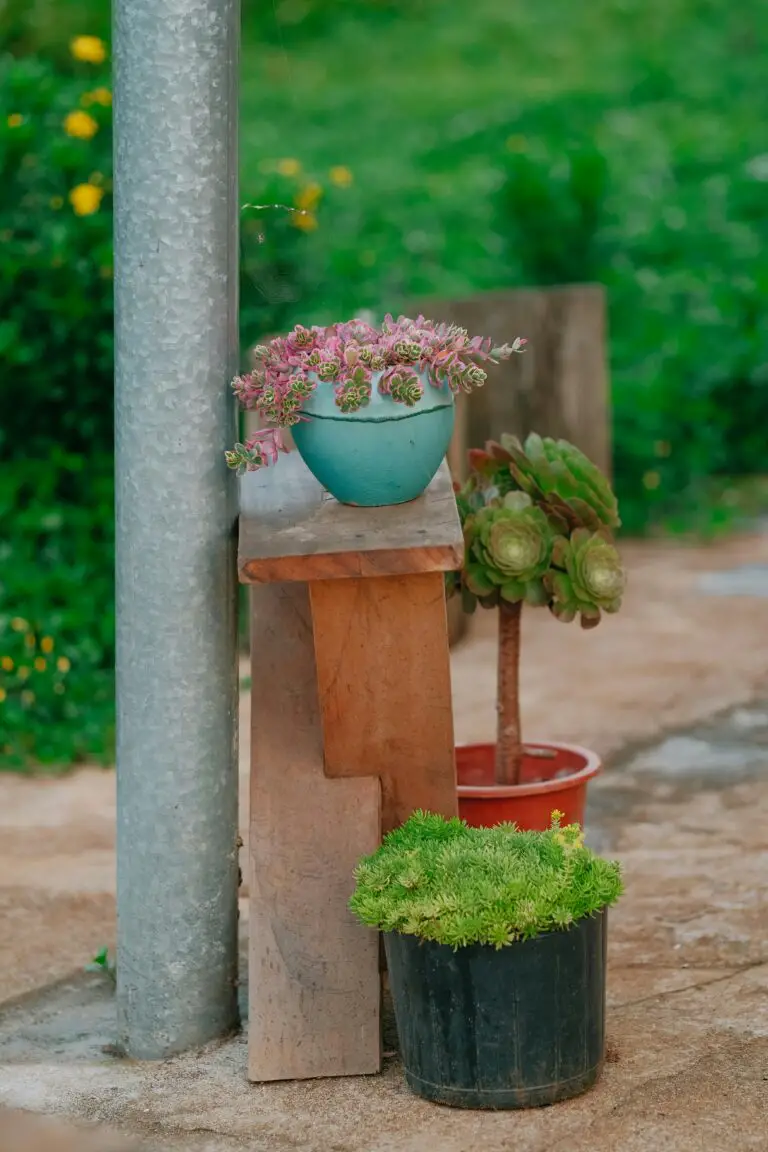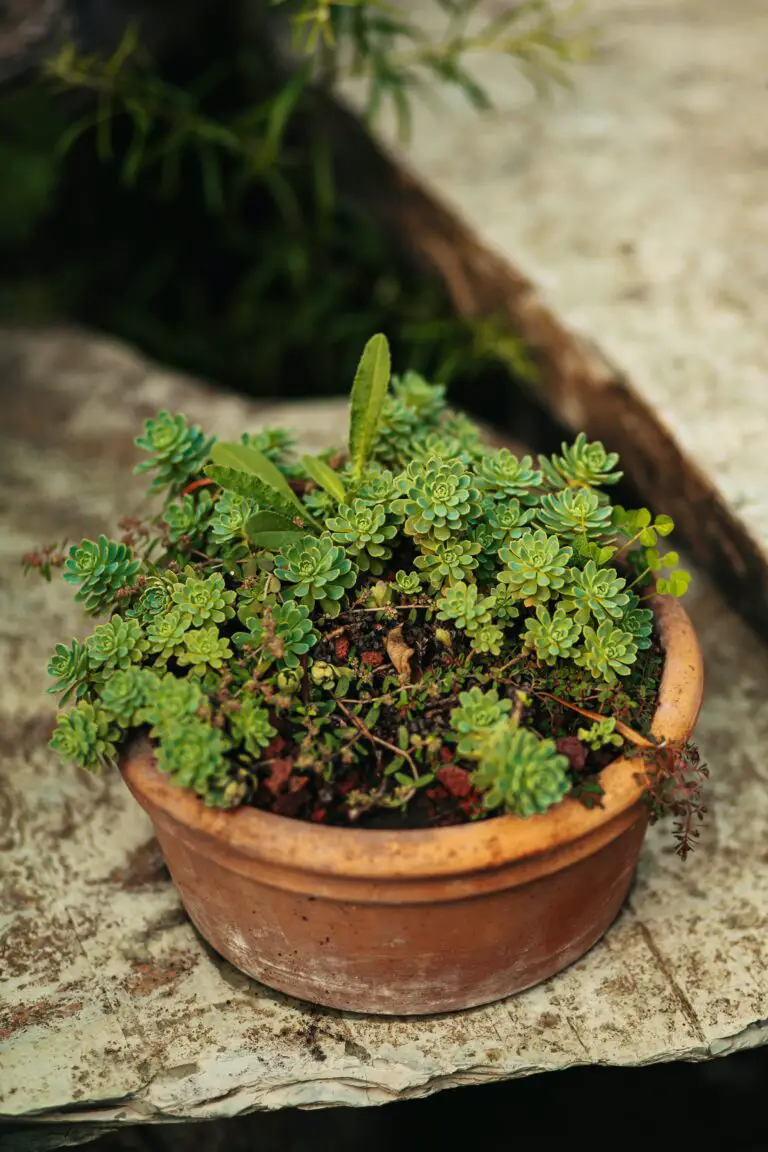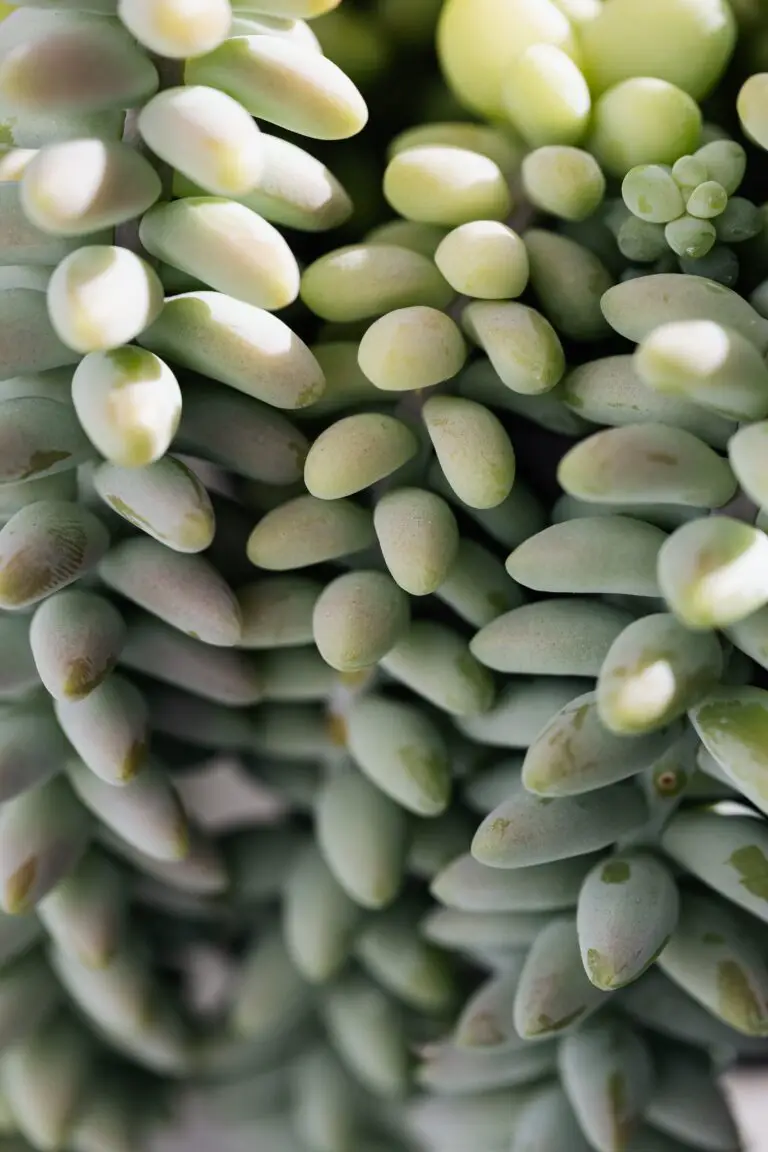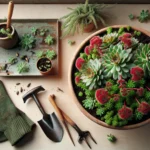Introduction to Sedum Palmeri
Embrace the charm of Sedum Palmeri, a gem tucked away in the diverse world of succulents. With its unrivaled beauty and resilient nature, this plant has captured the hearts of green thumbs and novices alike. Picture a cluster of rosettes, each one a testament to the plant’s tenacity and its remarkable ability to flourish under the touch of those who cherish it.

Each leaf of the Sedum Palmeri, a palette of ever-changing hues, transitions from lush greens to rosy pinks when basked in the sun’s embrace. It’s not just a plant; it’s a living sculpture that evolves with the seasons. A fascinating spectacle, isn’t it? For those seeking a piece of nature’s artwork within their homes or gardens, Sedum Palmeri offers a delightful visual treat.
Known for more than just its looks, this succulent asserts itself as a formidable contender in the realm of easy-care plants. Perfect for the bustling lives of many, it demands little but gives much in return. This characteristic underlines the plant’s popularity, making it a ubiquitous presence in nurseries and succulent guides.
In this Introduction to Sedum Palmeri, discover the secret to its allure: a combination of ornamental charm and undemanding nature that makes it an appealing choice for plant lovers across the globe. Yes, it’s more than a plant – it’s a thriving, low-maintenance companion that enriches our surroundings with its simple splendor.
Origins and Habitat: Sedum Palmeri’s Natural Home
Welcome to a journey through the fascinating origins and habitat of Sedum palmeri, a gem among succulents with a story rooted in the rich tapestry of nature. As we peel back the layers of history, we unearth how this resilient plant has adapted to thrive in its native environment, shaping the way we care for it in our own domestic oases.

The tale of Sedum palmeri begins amidst the rugged landscapes of Mexico, where it basks in the embrace of a warm, sun-soaked climate. Here in its natural abode, it flourishes on rocky outcrops and slopes, where the well-draining soil and open air marry to create the perfect cradle for growth. Glimpses of succulent care wisdom passed down through generations originate from these very soils.
In our quest to emulate the carefree spirit of Sedum palmeri in gardens and homes, we take cues from its origins. The porous soil of its habitat whispers the ancient secrets of optimum care—a careful balance of moisture and air. Grasping these essentials allows any garden enthusiast to transform their space into a slice of Sedum palmeri‘s native serenity.
As gardening tips swirl around the nuances of succulent plant care, incorporating real-life parallels to Sedum palmeri‘s habitat offers insight into achieving a thriving, lush green spectacle. Visualize the stonecrop swaying gently in the Mexican breeze, resilient and evergreen, and let that natural elegance guide your gardening journey.
Embrace the essence of Sedum palmeri‘s homeland within your garden’s design, and watch as what was once wild and untamed melds seamlessly into your cultivated paradise. Who knew that the secrets to perfect Sedum palmeri care lay hidden in the very soils of its ancestry? The answer is etched within every leaf and stem—verdant proof of nature’s profound simplicity.
Growing Sedum Palmeri: Essential Tips for Your Garden
There’s something exceptionally rewarding about cultivating Sedum Palmeri, or as I like to call it, the sunny soprano of the succulent world. Maybe it’s because these little guys are both resilient and ravishing—all they ask for is a spot where they can soak up the sun like they’re on a Riviera holiday. So let’s dive into the essential tips that will ensure your Sedum Palmeri hits all the right notes in your garden!

First off, the spotlight for Sedum Palmeri is undoubtedly sunlight. These succulents don’t just tolerate a sunny day; they relish it. Aim for a location that offers a day-long dapple of direct light to foster their lush, green foliage and cheerful yellow flowers. But remember, even sun worshippers like Sedum Palmeri need a little shade from the scorching midday heat, especially in hot climates. It’s like having the perfect pair of sunglasses: essential for a day outdoors.
Next up is the stage for this green ensemble—the soil. Think of the ideal soil mix for Sedum Palmeri as the perfect acoustic for an opera house. It needs to be well-draining and porous, much like a scree garden that mimics their natural rocky habitats. A blend of sandy or gritty soil with a dash of compost provides the perfect stage. Consider visiting our comprehensive guide on succulent soil for the ultimate mix that’ll hit the high note every time.
Finally, let’s talk about the fine art of watering. Overwatering will have your sedums hitting a sour note, leading to root rot faster than you can say “encore.” Your cue to water these drought-tolerant darlings is when the soil is dry—usually a week or so, depending on the season. This occasional drink will keep those roots humming along happily.
With these essential tips, your Sedum Palmeri will not only survive but thrive, serenading you with its low-maintenance yet show-stopping performance through the seasons. And that, dear gardeners, is how you orchestrate growing Sedum Palmeri in your own backyard opera house.
Propagating Sedum Palmeri: A Step-by-Step Guide
Unlock the secret to multiplying your Sedum Palmeri collection! It’s not alchemy, but it sure feels magical when you see new life spring from cuttings and leaves. Let’s dig into the dirt and get our hands dirty with some practical propagation techniques for your Sedum Palmeri.
Choosing Your Method: Cuttings or Leaves?
The beauty of Sedum Palmeri lies in its generosity; both stem cuttings and leaves can give rise to new plants. Snipping a stem cutting just above a leaf node or gently twisting off a plump, healthy leaf is your starting line in this propagation race.
Preparation is Key: Rooting Your Cuttings
Once you have your cuttings or leaves, it’s time to give them a moment to callous over. A day or two out on a dry surface will do. Be patient, as this step is crucial to prevent rot when they hit the soil. Ready to plant? Choose a well-draining succulent mix, get those cuttings or leaves nestled in, and play the waiting game as nature does its thing.
Real-life example: Picture Karen, an avid gardener, who believed her green thumb had turned brown after several failed propagation attempts. With these simple steps, her Sedum Palmeri cuttings flourished, turning her balcony into a lush green haven. If Karen can do it, so can you!
Mother Nature’s Pace: Time and Care
Don’t rush – understanding that growth takes time is part of the propagating process. Ensure your future Sedum Palmeri plants have bright, indirect light and water sparingly. Over the weeks, tiny roots will seek out life in the soil, and you’ll soon see signs of success. Keep up with these efforts, and you’ll be rewarded with a plethora of Sedum Palmeri, each as splendid as the next.
Sharing the Splendor: Gifting and Expanding
With these propagation methods mastered, spreading the joy of Sedum Palmeri is as simple as sharing a cutting with a neighbor or friend. Imagine their delight when they too can nurture these succulent beauties. Propagation isn’t just about growing plants, it’s about cultivating connections and sharing in nature’s bounty.
There you have it, your step-by-step guide to propagating Sedum Palmeri. May your garden overflow with the beauty of these succulents, and may your green thumb be ever verdant. Happy propagating!
Design and Aesthetics: Integrating Sedum Palmeri in Landscaping
Imagine a touch of nature’s masterpiece right in your backyard or sprawling across an urban rooftop garden. That’s the magic Sedum Palmeri brings to the table—or rather, to the landscape. Known for its resilient nature and vibrant green hues, this succulent is more than just a hardy plant; it’s a charismatic character that livens up any space it inhabits.

When you think about landscaping, consider the liveliness Sedum Palmeri, or Palmer’s Sedum, can add. Picture a stone pathway bordered by the lush, lemon-green rosettes spilling softly over the edges. This succulent isn’t merely surviving; it’s thriving and bringing with it a textural delight that contrasts beautifully against the hard, structured surfaces of urban hardscapes. Plus, when they bloom, the bursts of yellow flowers are like little solar flares—a visual treat that complements the greenery exquisitely.
But let’s not limit our vision to ground-level vistas. Sedum Palmeri takes rooftop gardens to new heights—quite literally. It is ideal for green roof installations because of its low maintenance needs and drought tolerance. Imagine an aerial view of a building, a vibrant quilt of Sedum Palmeri softening the harsh lines of city architecture and providing a sanctuary for urban wildlife. It’s not just a plant; it’s a story of resilience and beauty against the concrete backdrop of city life.
In residential settings, incorporating Sedum Palmeri as a living mulch is another novel way to integrate this succulent into your design. It provides a compelling alternative to traditional mulch, conserving soil moisture, and adding a pop of color and texture. Plus, it’s a conversation starter—neighbors and passersby are bound to take note of your sustainable and aesthetically pleasing choice.
Finally, don’t forget container gardens where Sedum Palmeri shines as well. Interspersed with other drought-tolerant plants or standing alone in a minimalist statement piece, this sedum ensures your potted displays are evergreen—both literally and in interest. Small space? No problem. Sedum Palmeri makes urban balconies and tiny terraces inviting green retreats, showing that no space is too small for a touch of nature’s splendor.
So, whether you’re looking to enliven a pathway, create a garden skyline, or simply add a natural touch to your urban enclave, Sedum Palmeri stands ready to transform your space. It’s more than just a plant—it’s architectural greenery that brings dimension, color, and life to the canvas of landscaping.
Seasonal Care for Sedum Palmeri: Adapting to Changes
Embracing the seasonal symphony, Sedum Palmeri captivates with its resilience and vibrancy. Yet, even the sturdiest of succulents craves a touch of attunement to the ever-shifting weather’s whims. Whether navigating the frugal water gifts of summer or the generous raindrops of spring, Sedum Palmeri’s care dances with the calendar, promising a year-round display of splendid succulence.
Spring Awakening: A Thirst for New Growth
As winter wanes and spring heralds new beginnings, your Sedum Palmeri will awaken with an eagerness to grow. This is the time for renewal, refreshing the soil and introducing a scheduled watering routine, balancing moisture with the plant’s increasing thirst. Be alert to the lengthening days and the sunlight’s embrace, optimizing exposure to nourish its fresh shoots.

Summer Sizzle: Wise Watering and Sunscreen
Summer’s sizzle puts Sedum Palmeri to the test, with soaring temperatures challenging its moisture retention prowess. Wise watering during the cooler hours of morning or evening will prevent scorched leaves and stressed roots. And just like us, Sedum Palmeri appreciates a little shade from the midday sun, a parasol of protection to maintain its cool.
Autumn Adjustments: Preparing for the Cool Down
Autumn’s amber hues signal a time to scale back, to moderate the care routines established in the exuberance of spring and summer. It’s about striking a balance, less water, but not neglect; less sun, yet not shrouded in darkness. This is the season for Sedum Palmeri to store energy, to fortify itself against the chill that is to come.
Winter Watch: The Resting Phase
In the heart of winter, Sedum Palmeri enters a restful pose, its metabolism slowing as the temperature drops. Water becomes an infrequent guest, and light, a cherished but not overindulgent friend. It’s a time of observation more than action, noting the subtle signs of a plant in peaceful dormancy, waiting for the spring’s encore.
Through each season’s unique demands, understanding and adapting to the rhythms of nature will ensure that your Sedum Palmeri continues to thrive, proving that even in the quiet corners of our lives, beauty and resilience can be found. Every season brings a new verse to the ballad of care, and with each note struck in harmony, the Sedum Palmeri’s splendor plays on.
Common Challenges in Caring for Sedum Palmeri
When you welcome the stylish Sedum Palmeri into your home, you’re signing up for a relationship with a living, breathing entity. Just like any other relationship, it comes with its ups and downs. One day your Sedum is the epitome of plant perfection, and the next, you might notice an unwanted pest making a snack out of your succulent’s fleshy leaves. Fret not, for we’re about to scoop up some soil-covered secrets to keep your Sedum Palmeri happy and healthy.

Imagine this: You spot a tiny intruder on your beloved plant—a spider mite, perhaps, weaving its web of deceit among the leaves. These minuscule marauders sneak in and sap the vitality from your Sedum Palmeri. But with a keen eye and prompt response, they’re no match for a plant parent armed with a spray bottle and a mission. A spritz of soapy water or a neem oil solution acts like a shield, turning your succulent into a fortress against these eight-legged vandals.
Let’s not forget about those winged woes—aphids and mealybugs, who buzz in with the audacity of unwelcome picnic guests. They’re attracted to the succulent like bees to a bloom, draining its vigor with their insatiable appetites. Before you raise the white flag in defeat, consider introducing natural predators to your indoor ecosystem. Ladybugs are not just dainty decorations for your garden; they’re the guardians of greenery, gobbling up aphids faster than you can say “pest control.”
And then there’s the ever-dreaded root rot. Lurking beneath the surface, this silent assassin waits for the opportunity to overtake roots that have been waterlogged one too many times. Prevention is your best tactic here—implement a watering schedule that mimics the natural dry spells Sedum Palmeri would experience in the wild. When soil is as dry as a desert wanderer’s throat, that’s your cue. A good, deep drink will quench your plant’s thirst without drowning its roots in excess moisture.
Remember, the key to a flourishing Sedum Palmeri is vigilance and proactive care. By paying attention to the early signs of pests and diseases, you can keep your succulent sanctuary peaceful and pest-free. So keep those eyes peeled and that green thumb ready, for the beauty of your Sedum Palmeri is well worth the fight against these common challenges.
Sedum Palmeri’s Impact on Biodiversity and Ecosystems
When you think about plants that amplify the biodiversity and fortify our ecosystems, Sedum Palmeri might not be the first that springs to mind. But it should! This charming succulent, also known as Palmer’s sedum, is more than just a pretty face in the garden; it’s a bona fide biodiversity booster. Let’s dive into the green goodness of Sedum Palmeri and see how it flexes its ecological muscles.
Imagine a garden buzzing with life, where honeybees dance from flower to flower, and butterflies flutter in a delightful display of color. Sedum Palmeri, with its lush green leaves and starry yellow blossoms, isn’t just a decorative ornament. It’s a thriving hub for these essential pollinators. By introducing this succulent into our gardens, we’re creating a sanctuary that invites and sustains a variety of insect life, which in turn plays a pivotal role in pollinating our crops and flowering plants.
The Sedum Palmeri Haven for Pollinators
As urban spaces grow, the natural habitats of countless species diminish. But with Sedum Palmeri, we’re able to lend a helping hand right in our backyards. This succulent’s hardy nature makes it the perfect candidate for urban gardening. Plus, its blooms are like a siren call to bees and butterflies, vital creatures in our ecological narrative. Just check out the flutter of activity in this video where these buzzing visitors can’t seem to get enough of Sedum’s nectar-rich flowers:
What’s more, by adding Sedum Palmeri to the mix, we’re boosting the genetic diversity of our gardens. Each plant serves as a potential genetic reservoir, contributing to the overall health and adaptability of our plant population. It’s as if Sedum Palmeri dons a tiny superhero cape, protecting our ecosystem against the kryptonite of uniformity and vulnerability to pests and diseases.
A Chain Reaction in the Ecosystem
But the magic of Sedum Palmeri in the context of biodiversity doesn’t end with pollinators. This resilient succulent acts as a fulcrum, initiating a chain reaction throughout the ecosystem. Its presence encourages a balanced predator-prey dynamic, which means more beneficial insects like ladybugs and fewer aphids munching away on your roses. It helps maintain the delicate equilibrium of nature’s intricate web, ensuring that no one species gains dominion over the others.
So, the next time you’re pondering how to jazz up your garden and simultaneously do Mother Earth a solid, consider the underestimated powerhouse that is Sedum Palmeri. It stands as a testament to the fact that sometimes, the most unassuming of heroes can have the mightiest impact on the world around us.
Frequently Asked Questions
Embarking on the journey of Sedum Palmeri care, you’re bound to encounter a smorgasbord of questions. After all, who wouldn’t want to unravel the secrets behind the lush, emerald tendrils of this succulent charmer? Let’s dive into a treasure trove of queries that unite both the neophyte nurturers and the sage savants of the succulent sphere.
How do I start with Sedum Palmeri?
Imagine you’ve just returned from a local nursery with a radiant Sedum Palmeri, its vibrant green foliage tenderly cradled in your hands. The very first step? Indulge it in some good ol’ sunshine and a cozy potting mix that drains faster than sand through an hourglass. Think of it this way: your succulent desires the beach experience, warm yet never soggy.
Can Sedum Palmeri endure frosty farewells?
Picture this: a frosty winter morning where the grass crunches underfoot, and you wonder if your beloved Sedum Palmeri is braving the chill as well as you are. Here’s the scoop – they can handle a nippy night better than a tropical plant, but sustained frost? That’s the equivalent of sending them on an Arctic expedition with nothing but a T-shirt!

When should I water this succulent symphony?
Let’s conjure the image of a desert downpour, rare yet refreshing. That’s the rhythm you want to mimic for your Sedum Palmeri. Allow the soil to dry out faster than a desert stream after a storm. And when the moment comes, drench it like the monsoon skies, ensuring the water flows free from the pot’s base.
Is Sedum Palmeri a fast grower?
Envision a race between a turtle and a hare. Your Sedum Palmeri is more of a leisurely turtle, spreading its foliage in a measured, serene dance with time. It won’t shoot up overnight, but give it a season, and you’ll see a transformation as it multiplies with a subdued yet sure pace.
How to propagate the plant for endless greenery?
Ever dreamt of a Sedum Palmeri utopia, with offspring stretching as far as the eye can see? It’s not mere fantasy! Snip a sprig, let it callous over like a seasoned hiker’s palm, then settle it atop a nurturing soil mix. Water sparingly, as you would nurse a fine wine, and watch as new life takes root from the mother’s embrace.
In the grand tapestry of caring for Sedum Palmeri, every question we answer unfurls a new layer of wonder for this succulent sensation. From its luscious green allure to its leisurely growth, it’s a plant that beckons us to embrace the joy woven into every aspect of its care.



